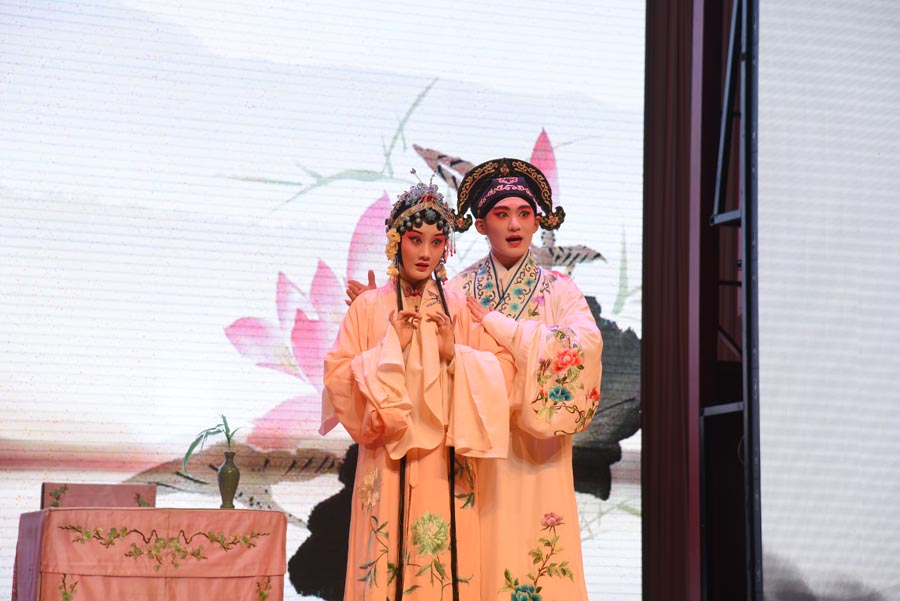 |
|
Artists perform The Peony Pavilion: The Dream in the Garden to show the magic of Kunqu Opera to audiences. [Photo/chinadaily.com.cn] |
It is characterized by its dynamic structure and melody (kunqiang) and classic pieces such as the Peony Pavilion and the Hall of Longevity. It combines song and recital as well as a complex system of choreographic techniques, acrobatics and symbolic gestures. The opera features a young male lead, a female lead, an old man and various comic roles, all dressed in traditional costumes. Kun Qu songs are accompanied by a bamboo flute, a small drum, wooden clappers, gongs and cymbals, all used to punctuate actions and emotions on stage. Renowned for the virtuosity of its rhythmic patterns (changqiang), Kun Qu opera has had a considerable influence or more recent forms of Chinese opera, such as the Sichuan or Beijing opera.
The opera has suffered a gradual decline since the eighteenth century because of the high-level technical knowledge it also requires from its audience. Of the 400 arias regularly sung in opera performances in the mid-twentieth century, only a few dozen continue to be performed. The Kun Qu opera survived through the efforts of dedicated connoisseurs and various supporters who seek to attract the interest of a new generation of performers.